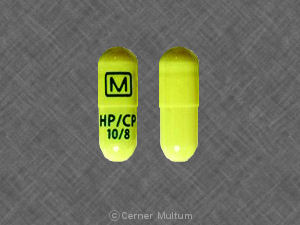TussiCaps Interactions
There are 667 drugs known to interact with TussiCaps (chlorpheniramine/hydrocodone), along with 20 disease interactions, and 2 alcohol/food interactions. Of the total drug interactions, 217 are major, 445 are moderate, and 5 are minor.
- View all 667 medications that may interact with TussiCaps
- View TussiCaps alcohol/food interactions (2)
- View TussiCaps disease interactions (20)
Most frequently checked interactions
View interaction reports for TussiCaps (chlorpheniramine / hydrocodone) and the medicines listed below.
- acetaminophen
- Adderall (amphetamine / dextroamphetamine)
- Adderall XR (amphetamine / dextroamphetamine)
- Aleve (naproxen)
- amlodipine
- amoxicillin
- Ativan (lorazepam)
- atorvastatin
- Augmentin (amoxicillin / clavulanate)
- Benadryl Allergy (diphenhydramine)
- benzonatate
- biotin
- bupropion
- Carafate (sucralfate)
- cinnamon
- Cipro (ciprofloxacin)
- cyclobenzaprine
- Cymbalta (duloxetine)
- doxycycline
- Fish Oil (omega-3 polyunsaturated fatty acids)
- Flexeril (cyclobenzaprine)
- gabapentin
- ibuprofen
- meloxicam
- metformin
- methylprednisolone
- prednisone
- tramadol
- Vitamin D3 (cholecalciferol)
- Zyrtec (cetirizine)
TussiCaps alcohol/food interactions
There are 2 alcohol/food interactions with TussiCaps (chlorpheniramine / hydrocodone).
TussiCaps disease interactions
There are 20 disease interactions with TussiCaps (chlorpheniramine / hydrocodone) which include:
- impaired GI motility
- infectious diarrhea
- prematurity
- acute alcohol intoxication
- drug dependence
- hypotension
- intracranial pressure
- respiratory depression
- gastrointestinal obstruction
- anticholinergic effects
- asthma/COPD
- cardiovascular
- renal/liver disease
- adrenal insufficiency
- liver disease
- renal dysfunction
- seizure disorders
- urinary retention
- arrhythmias
- biliary tract disease
More about TussiCaps (chlorpheniramine / hydrocodone)
- TussiCaps consumer information
- Compare alternatives
- Reviews (6)
- Drug images
- Side effects
- Dosage information
- During pregnancy
- Drug class: upper respiratory combinations
Related treatment guides
Drug Interaction Classification
| Highly clinically significant. Avoid combinations; the risk of the interaction outweighs the benefit. | |
| Moderately clinically significant. Usually avoid combinations; use it only under special circumstances. | |
| Minimally clinically significant. Minimize risk; assess risk and consider an alternative drug, take steps to circumvent the interaction risk and/or institute a monitoring plan. | |
| No interaction information available. |
See also:
Further information
Always consult your healthcare provider to ensure the information displayed on this page applies to your personal circumstances.


